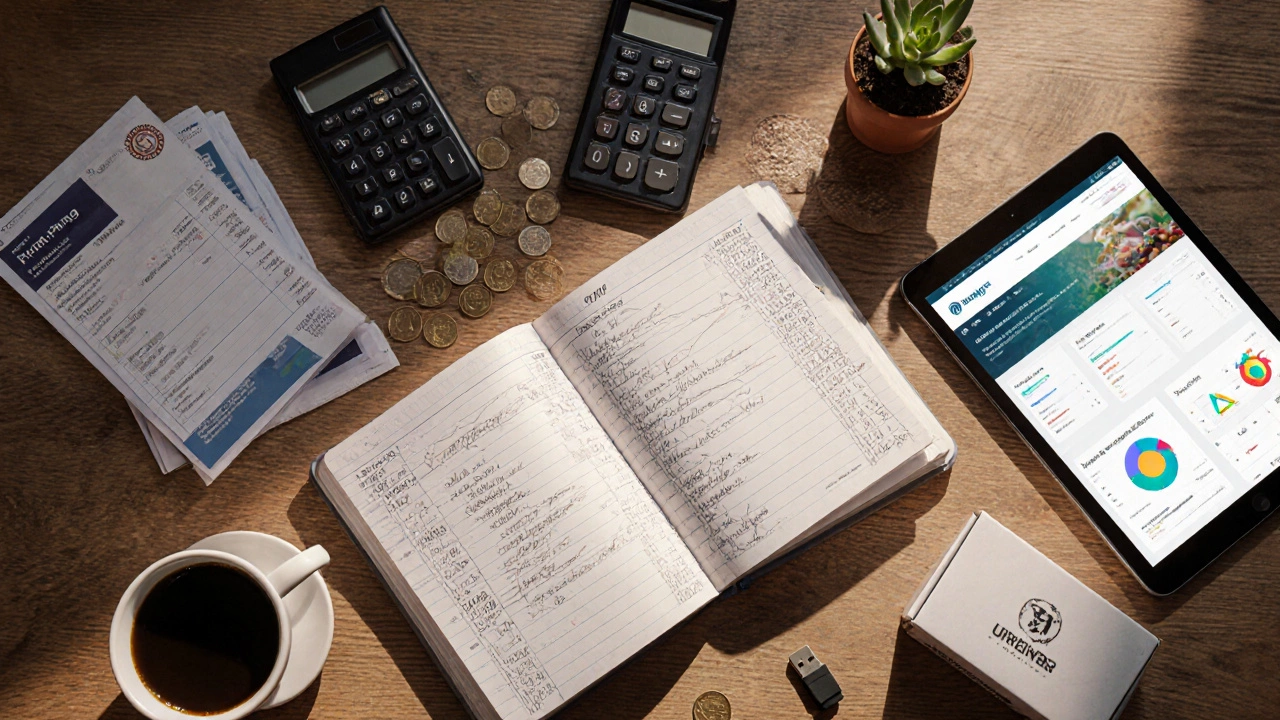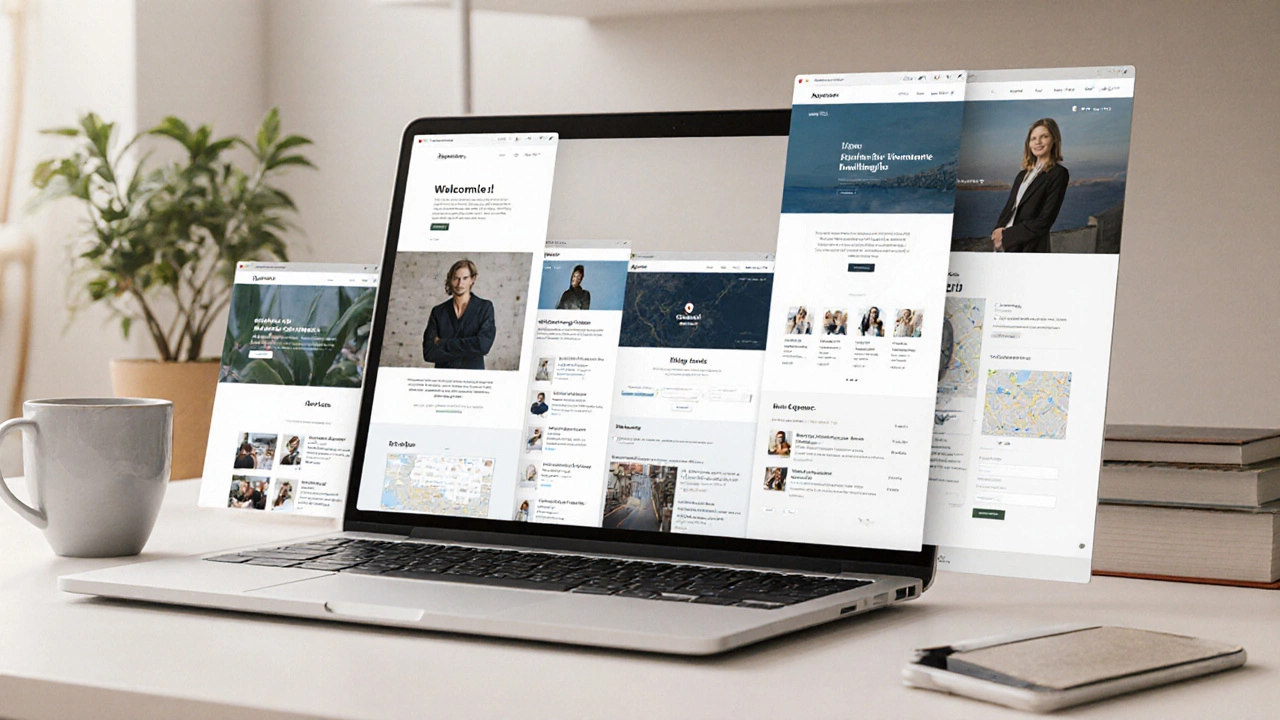Website Cost Calculator
Your Website Cost Estimator
Estimate your total 5-page website cost in India for 2025 based on your choices.
Your Estimate
Breakdown
| Initial Setup Cost | |
| Monthly Costs | |
| Total Yearly Cost |
Ever wondered how much you’ll actually pay to get a simple five‑page site up and running? The short answer is: it depends on a handful of choices you make along the way-platform, who does the work, and the ongoing services you need. Below is a no‑fluff walk‑through of every cost component you’ll encounter in 2025, plus real‑world price ranges for India.
What exactly is a 5‑page website?
A Website is a collection of interlinked web pages that live under a single domain name. For most small businesses, a five‑page site covers the essentials:
- Home - the front door for visitors.
- About - tells who you are and why you matter.
- Services or Products - showcases what you sell.
- Blog or Resources - optional but great for SEO.
- Contact - form, map, phone, or email.
That’s it. No e‑commerce checkout, no member portal, no custom app. Keeping the scope tight is the biggest budget‑saving move.
Fixed costs: domain name and Web hosting the server space where your site’s files reside
Every live site needs a domain and a host. In India, popular registrars charge anywhere from ₹500 to ₹1,300 per year for a .in domain. International .com domains sit at ₹800‑₹1,500 annually.
Web hosting shared, VPS, or managed hosting plans that keep your site online ranges widely:
- Shared hosting (Bluehost, HostGator) - ₹2,000‑₹4,500 per year.
- Managed WordPress hosting (Kinsta, WP Engine) - ₹9,000‑₹18,000 per year.
- VPS (DigitalOcean, Linode) - ₹6,000‑₹12,000 per year for a basic 2‑CPU, 2GB setup.
If you’re testing the waters, shared hosting is enough. Swap to managed or VPS once traffic exceeds a few hundred visitors a day.
Design & development costs
Here’s where most of the budget goes. You have three common pathways:
- DIY website builders - platforms like Wix, Squarespace, or WordPress.com a hosted version of WordPress that removes the need for separate hosting. Monthly fees: ₹800‑₹2,200 (≈$10‑$30) plus a premium template if you want a polished look.
- Freelancer an independent developer who charges per project or hour. Rates in India: ₹800‑₹2,500 per hour, or a flat fee of ₹12,000‑₹35,000 for a five‑page site built on WordPress or static HTML.
- Agency a professional design studio that handles everything from UI/UX to SEO. Package pricing: ₹35,000‑₹80,000, sometimes more if you ask for custom graphics, animations, or extensive SEO.
DIY is cheapest but you sacrifice flexibility. A freelancer offers a balance of cost and customisation. An agency gives you a polished brand‑ready product but at a premium.
Ongoing expenses: maintenance, updates, and SEO
Even after launch, a site needs care. Typical monthly tasks include:
- Software updates (WordPress core, plugins, themes) - ₹500‑₹1,500 if you hire a freelancer for a few hours.
- Security monitoring - ₹300‑₹800 per month for a managed service.
- Content creation - ₹5,000‑₹15,000 per month for a part‑time writer if you plan a blog.
- Local SEO services - ₹8,000‑₹20,000 per month for citation building and on‑page tweaks.
Budget‑wise, expect around ₹1,000‑₹3,000 per month if you handle updates yourself, or ₹5,000‑₹12,000 if you outsource the whole maintenance package.

Cost comparison table
| Option | Initial Setup Cost (₹) | Monthly Ongoing Cost (₹) | Typical Timeline | Best For |
|---|---|---|---|---|
| DIY Builder | 5,000‑12,000 (includes domain & hosting) | 800‑2,200 | 1‑2 weeks | Budget‑first owners comfortable with templates |
| Freelancer | 12,000‑35,000 | 1,000‑3,000 | 2‑4 weeks | Small businesses wanting a custom look |
| Agency | 35,000‑80,000 | 5,000‑12,000 | 3‑6 weeks | Brands that need full design, branding, and SEO |
Tips to keep the budget under control
- Start with a clear scope. Write down the exact pages, features, and copy you need before contacting anyone.
- Choose a pre‑made theme instead of a custom UI. Premium WordPress themes cost ₹2,000‑₹5,000 and shave weeks off development time.
- Reuse content you already have-brochures, presentations, or social posts can become page copy.
- Opt for shared Web hosting during the first year; upgrade later if traffic grows.
- Bundle maintenance with your developer. Many freelancers offer a 10‑hour monthly retainer for ₹2,000‑₹4,000.
Hidden expenses you shouldn’t ignore
Even after you’ve Budgeted the visible costs, a few sneaky items can pop up:
- Stock images and icons - royalty‑free libraries are free, but premium packs cost ₹1,000‑₹3,000.
- Plugin licenses - SEO plugins like Yoast Premium or security tools often charge an annual fee (~₹2,000‑₹5,000).
- Content migration - moving existing pages from an old site can add ₹5,000‑₹10,000.
- Legal pages - privacy policy and terms & conditions drafts from a lawyer run ₹2,000‑₹6,000.

Example budgeting scenario
Say you’re a boutique consultancy in Mumbai. You want a clean WordPress site with a blog and contact form. Here’s a realistic 12‑month budget:
- Domain (.in) - ₹1,000
- Shared hosting - ₹3,000
- Premium theme - ₹4,000
- Freelancer design & dev - ₹20,000
- Basic SEO setup - ₹5,000
- Monthly maintenance (5hrs) - ₹2,400×12 = ₹28,800
- Content writing (4posts/month) - ₹8,000×12 = ₹96,000
Total first‑year cost: roughly ₹158,800 (≈$1,900). If you skip the ongoing blog, you’d shave over ₹80,000 off the total.
Quick checklist before you sign a contract
- Have you listed every required page?
- Did you get a clear breakdown of design, development, and recurring fees?
- Is the provider including at least 30days of post‑launch support?
- Are domain and hosting costs shown separately?
- Do you have a written SLA for updates and security patches?
Cross‑checking these items saves you surprise invoices later.
Frequently Asked Questions
How much does a basic 5‑page website cost in India?
For a DIY builder you’ll spend roughly ₹5,000‑₹12,000 upfront plus a monthly fee of ₹800‑₹2,200. Hiring a freelancer typically runs ₹12,000‑₹35,000 once, with ₹1,000‑₹3,000 per month for maintenance.
What are the biggest factors that affect the price?
Scope (custom design vs template), platform (WordPress vs static HTML), who does the work (freelancer vs agency), and ongoing services such as SEO or security all drive the final cost.
Is it cheaper to buy a ready‑made theme instead of a custom design?
Yes. Premium themes cost ₹2,000‑₹5,000 and cut development time by weeks, saving hundreds of rupees compared to a fully custom UI.
Do I need a separate SSL certificate?
Most modern hosts include a free SSL (Let’s Encrypt). If you need a premium certificate for extended validation, expect ₹2,000‑₹6,000 per year.
Can I upgrade from shared hosting later?
Absolutely. Migration to VPS or managed WordPress hosting is a common step once you hit 500‑1,000 monthly visitors.
Armed with this breakdown, you can decide whether to go DIY, hire a freelancer, or partner with an agency. Whatever route you pick, keep an eye on hidden fees and plan for ongoing maintenance - that’s the real key to a site that not only launches but stays healthy for years to come.



